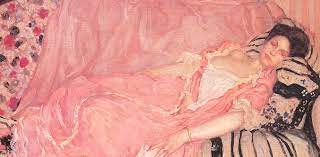How pink became fashion’s colour of controversy
Coming from the flush fuchsia of imperial mistresses towards the warm fuchsia of tabloid celebration women, fuchsia has actually acquired a credibility for being actually a intriguing colour for those that attempt towards use it.
In spite of its own different tones as well as the intricacies of its own social importance, it is actually a colour that's frequently top quality along with the exact very same undertones of womanly frivolity as well as extra - whether girlish as well as innocent or even girly as well as sensual.
A lot to ensure that worshippers at a North Greater london religion were actually purchased towards eliminate fuchsia seats after an ecclesiastical court declared that the option of palette might "trigger puzzlement".
This fuchsia stress welcomes the concern: why is actually fuchsia therefore questionable?
A short peek at its own instead vibrant background in the Western side globe unveils organizations that each form as well as difficulty exactly just what fuchsia implies.
Pink's past times
Inning accordance with historian Valerie Steele, the birth of fuchsia in contemporary style started in the 18th century. Through this duration, fuchsia possessed end up being the colour of option amongst courtly elites of the Western side globe, consisting of nobility as well as aristocrats.
Advancements in color creating as well as the French court's penchant for advanced garments offered the ideal pairing towards start pink's excellence as an arising style staple.
Possibly one of the absolute most instrumental affect on pink's energy was actually Madame de Pompadour - the girlfriend of Master Louis XV. She was actually frequently depicted due to the painter François Boucher showing off her trademark fuchsia dress as well as footwear, very most significantly in his 1759 item Madame de Pompadour.
In his 1758 paint, Madame de Pompadour at Her Toilette, she is actually revealed using rouge coming from a package of cosmetics - the blushed cheeks suggesting women sexuality. For Steele, the colour fuchsia within this particular duration ends up being connected to each the frivolity of French haute couture as well as the eroticising of white colored womanhood.
Coming from the 18th century court of law towards the 20th century house, fuchsia acquired additional grip in the 1950s. As English teacher of style background Cent Sparke composes: "Related to the concept of women youth, [pink] stood for the focus on unique gendering that underpinned 1950s culture, guaranteeing that ladies were actually men and women were actually guys."
Whether decorating very initial women, Hollywood celebrities or even homemakers, fuchsia within this particular age stood for a conventional womanhood bared in repaired sex functions.

.jpg)

